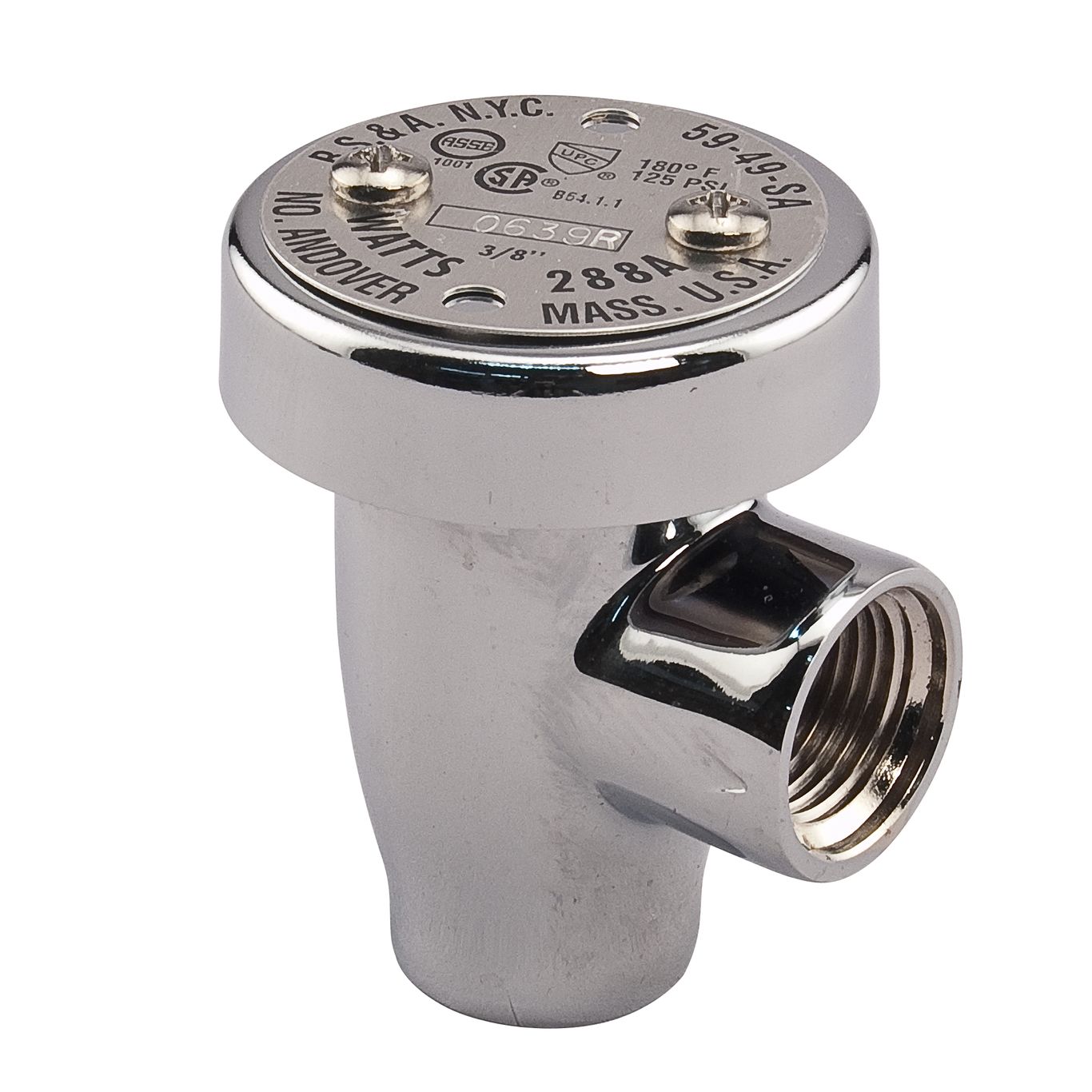Vacuum Breakers
Vacuum breakers are designed to prevent back-siphonage of water due to the generation of vacuum in water drainage systems. Raptor Supplies offers a wide range of vacuum breakers from brands like Apollo, Watts, Hayward, Wilkins, Morse, Plast-O-Matic, Sharkbite and Chicago Faucets. Apollo 38-100, 38-200, 38-500 and 38LF-100 Series vacuum breakers are ideal for a maximum pressure of 150 PSI and are available in 1/4 to 2 inch pipe sizes. The brand's 38-100 Series vacuum breakers prevent backflow of polluted water in portable water supply by breaking the vacuum generated during drainage of water. These ASSE 1001 certified breakers feature a heat-resistant silicone seat disc and a check valve with an air inlet. Watts ANSI, ASSE and NSF compliant vacuum breakers also have a maximum pressure withstanding rating of 150 PSI. These vacuum breakers are available in brass, bronze, chrome plated brass, lead free bronze, lead free brass and polished chrome body material variants.
 £ GBPChange Country
£ GBPChange Country

